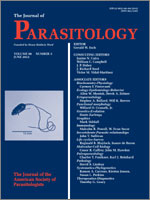The reproductive strategies and variation in reproductive success of ticks are poorly understood. We determined variation in multiple paternity in the American dog tick Dermancentor variabilis. In total, 48 blood-engorged female ticks and 22 male companion ticks were collected from 13 raccoon (Procyon lotor) hosts. In the laboratory, 56.3% of blood-engorged females laid eggs, of which 37.0% hatched or showed signs of development. We examined the presence of multiple paternity in the ensuing clutches by genotyping groups of eggs and larvae at 5 microsatellite loci and subtracting the known maternal alleles, thereby identifying male-contributed alleles. Seventy-five percent of the clutches presented multiple paternity, with a mode of 2 fathers siring the clutch. Males associated with the females on the host always sired some offspring. In 1 case, a male was the sire of clutches derived from 2 females, indicating both polygyny and polyandry may occur for this species. These results, combined with those of several other recent studies, suggest that multiple paternity might be frequent for ixodid ticks.
How to translate text using browser tools
1 June 2012
Multiple Paternity In the American Dog Tick, Dermacentor variabilis (Acari: Ixodidae)
María José Ruiz-López,
Saskia Chaskelson,
Matthew E. Gompper,
Lori S. Eggert
ACCESS THE FULL ARTICLE

Journal of Parasitology
Vol. 98 • No. 3
June 2012
Vol. 98 • No. 3
June 2012




